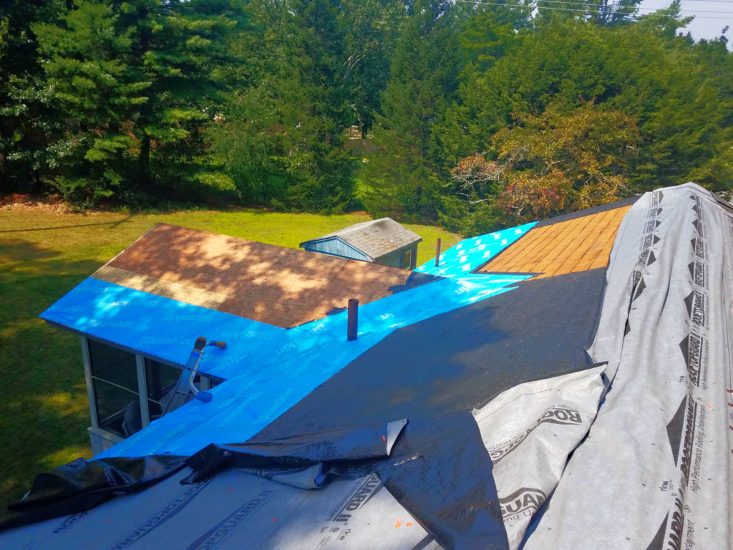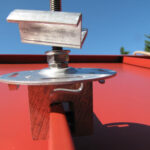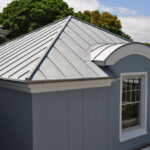Unforeseen Roof Decking Conditions for Metal Roofs
August 17, 2018 | By Bryan Rusch | Filed under: Blog, Metal Roofing

The roof deck is that part of the roof which provides the structural support for the installation of the roofing underlayments and the visible finished roofing material. The structural parts of the roof are also known as the roofing substrate. Builders refer to the substrate below the finished roofing material as sheathing, plywood, or decking. The age of your home determines what type of decking was used. We will be focusing in on existing roof decking on homes that are 75 years or older, as it is possible that there can be unforeseen roof decking conditions.
Antique Home Decking
Antique homes typically used one by (1”x) board thickness of various length and widths as part of the roof decking. Boards can also be referred to as planks or planking. If you have an attic space and can see the underside of the boards or planks, you may find spaces between the boards. Sometimes the boards are tight against each other, but more often than not there is some space. Sometimes that space can be as much as an inch depending on the age of the home.
Spaces between boards can be a challenge when installing metal roofing. There are times where we can install our press formed shingles in aluminum, copper or zinc using extended clips to catch the boards where a void is present, but in some cases, large distances between the boards mean that we can’t. When this occurs re-sheathing with a fir faced cdx or OSB plywood over the existing boards will be necessary.
Older Home roof Decking
Older homes with poor ventilation, creating hot attics, can really wear out the boards. The heat can dry out the boards to the point where they crack or become brittle. The integrity of the boards can be compromised further especially when reroofing has occurred multiple times. It will be the call of a roofing foreman following stripping of the existing shingles if a new layer of plywood over the existing boards will be required.
Leaking roofs can also cause boards to rot. Rotting boards tend to be very weak and often cannot hold a nail or screw. This is another example where the boards may need to be replaced if possible or whether it makes sense to have the roof boards and planks covered with new plywood decking.
When we install metal roofing for our customers we never take shortcuts. We provide a lifetime warranty on installation workmanship, so we would never consider installing our lifetime metal roofs over compromised roof decking. We always notify customers of areas of concern in the roof deck before proceeding with further work. Once the homeowner understands the particular issue with their roof substrate, we then take the necessary steps to ensure a proper installation of the roofing materials.
The reason why we call compromised roof decking an unforeseen condition is we sometimes cannot tell what condition the decking is in until we remove the top layer of roofing. In situations of an overlay, where we go over an existing layer of shingles, we do our best to determine the integrity of the decking below prior to starting an installation. We do this by accessing attic spaces to evaluate existing ventilation, insulation and the decking boards prior to providing an estimate. However, this is only possible where attic spaces allow access and the boards can be seen from beneath. When soliciting quotes from roofing contractors, asking about the condition of your roof decking and the possibility of having to re-sheath is always warranted if leaking has occurred or your home is considered an antique.





